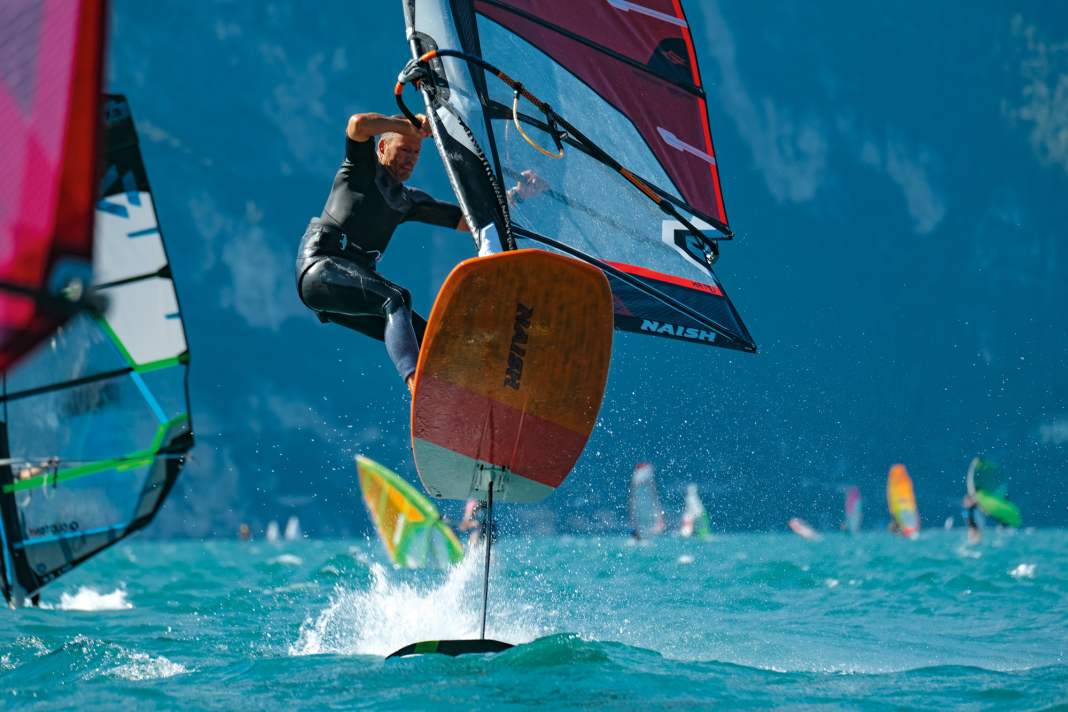





In this article:
Why does almost everything hurt after the first three hours of foiling, even for experienced windsurfers? A few years ago, the "surf Foil Camp powered by Naish" served as an open-air laboratory for the first comprehensive analysis of why the pain threshold for foil surfing is different to that of classic planing.
Sports scientist Dr Christoph Jolk wrote his dissertation on the stress levels of windsurfing professionals during the World Cups on Maui and Sylt in the 1990s and now offers health programmes for large companies with his company Geko. He observed one of the groups from the perspective of a foil beginner and training professional alike and analysed and evaluated the stresses and strains with the participants: "Even as advanced windsurfers, we started again at beginner level," the expert was also amazed, "with catching up with the sail, tedious starting and positioning of the rig.
Foil Basics:
Differences between foiling and normal windsurfing
The take-off into the hover is a wobbly affair, whereas classic windsurfing is stable: "The surfer hangs into the harness on a gliding board, holds the board flat on the water and tries to transfer as much power as possible to the board by means of compact body tension - keyword 'block formation'. This position is relatively stable as long as waves or gusty winds do not require constant adjustments. If maximum speed is not the goal, the advanced windsurfer can therefore jet across the water in a relatively relaxed manner, because with 60 per cent effort you can already reach 80 per cent of the possible speed, making easy cruising possible. And 30 per cent of the personal possible balance and coordination effort already creates around 80 per cent riding safety," says the sports scientist.
Foilsurfing is different: "In order to achieve a level of safety of perhaps 70 per cent, the foiling beginners estimated that they needed 90 per cent of their maximum potential in terms of strength and a whopping 90 per cent in terms of balance and coordination." So foiling at the limit? At least in the initial phase, the foiler stands completely differently on the board: more upright, orientated almost forwards, more balancing than powerful and also three-dimensional. "At the beginning, you work a lot on the transition from coarse to fine tuning."
More strenuous for beginners, easier later on
The overshooting movements, i.e. actually exaggerated corrections, are more energy-sapping than a constant load as in normal windsurfing. The board sometimes shoots up steeply, then abruptly down again. You are actually always too late with the corrections. The upper body twists in relation to the pelvis and hips, which puts a lot of strain on the hip muscles and lower back. In addition, the torso becomes more active due to rotation - the upper body turns more in relation to the pelvis and hips in order to position the rig at a good angle of attack.
This is most noticeable after a long day of foiling at the transition between the buttocks and hips and in the lower back. On the other hand, experienced foil surfers who are more sensitive - the repeaters in the camp - find the static and dynamic use of force when foiling less than with normal windsurfing. In good German "even less strenuous", as for Christian Breidach, who doesn't track his top speed, but the kilometres surfed without a harness (!) - on a good day this can add up to over 50.
Foil surfing is like riding a unicycle
Foiling beginners, on the other hand, struggle with the lack of fine-tuning, as minor movement errors have major consequences when foiling. One participant brought back the perfect comparison from the water: "Windsurfing is like riding a bike, foilsurfing is like riding a unicycle". It requires constant balancing movements in all directions forwards and backwards, sideways, up and down, with significantly more in the front-back axis. As a result, the calf and shin muscles are put under greater strain. However, the "large" leg muscles in the thigh also have to do more in the form of up and down movements; the demands are not as static as with jumping, but much more dynamic with a greater range of motion.
Rough movement patterns and high ranges of motion expand the load spectrum. Not significantly different from "normal" windsurfing, but felt multiplied by a factor of two to three. In particular, the necessary torso rotation in relation to the foot position and therefore the pelvis and hips puts more strain on the short, deep back muscles. "After the first few foil flights, it can almost feel like lumbago - but it's 'just' sore muscles," warns sports scientist Jolk, adding his personal conclusion after four days of foil camp: "Once you've passed the beginner's sound barrier, the movements become more precise and better dosed. The overall level is lower. However, the greatest challenge remains the fine-tuning and coordination of balance via the feet and legs to optimise the gliding position of the foil. Due to the overall unstable position in space, it will never be calm and fine-tuning will always be necessary."
And despite tired arms and tense backs from the perceived "ride on the razor blade" or "balance beam exercises", the participants also praise the rapid learning success and the completely new riding experience: "I never thought you could get so far so quickly", "it's harder than I thought, but with a super steep learning curve" and "the lift-off and hovering - when all you hear is the soft hiss - is simply MEGA!"
Après surf exercises against the "hangover" the day after - for windsurfers and foil surfers
We humans are actually built for movement. Our ancestors walked over 15 kilometres a day. Hunting and gathering with different movements and stresses have moulded our bodies over millions of years. An ideal physique for eight hours in an office chair and working on a PC would look very different. However, getting out on the water infrequently and irregularly pushes the muscles, which are not trained for this, to their limits within a very short time. Acidosis, tension and sore muscles are the result. Ideally, you should prepare your body with targeted training before the season, but who can manage that in their daily work routine? However, a few targeted stretching exercises after the session will at least allow the battered body to regenerate more quickly. Even Bundesliga professionals do short, active recovery sessions immediately after tough matches. In particular, this flushes burnt substances out of the muscles more quickly and reduces or even prevents tension. The following exercises effectively target the most stressed areas in windsurfing - with or without a foil.
Exercise for the forearms
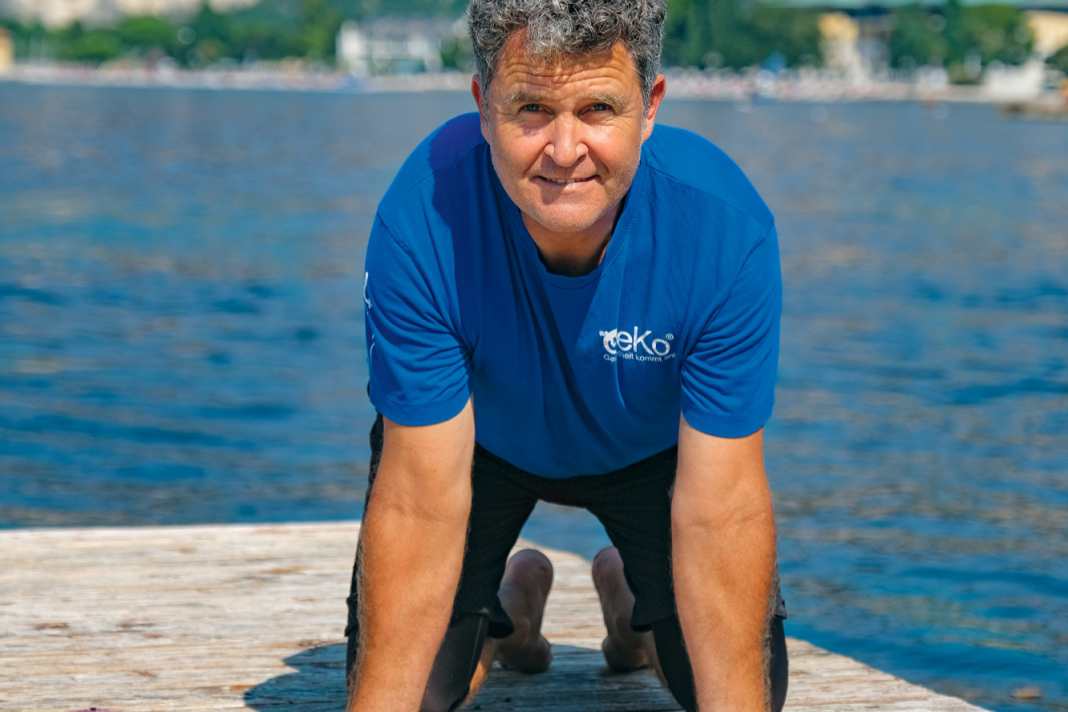


Gripping and holding the boom puts a lot of strain on the forearm muscles in general, and foiling involves particularly frequent, strong steering movements. In a quadruped position with your forearms vertical, place your hands so that your fingers are pointing towards your body. Then slowly lean backwards until you can clearly feel the stretch and stay there for at least 30 seconds. Important: Keep your entire palm flat on the floor.
Exercise for the shoulders
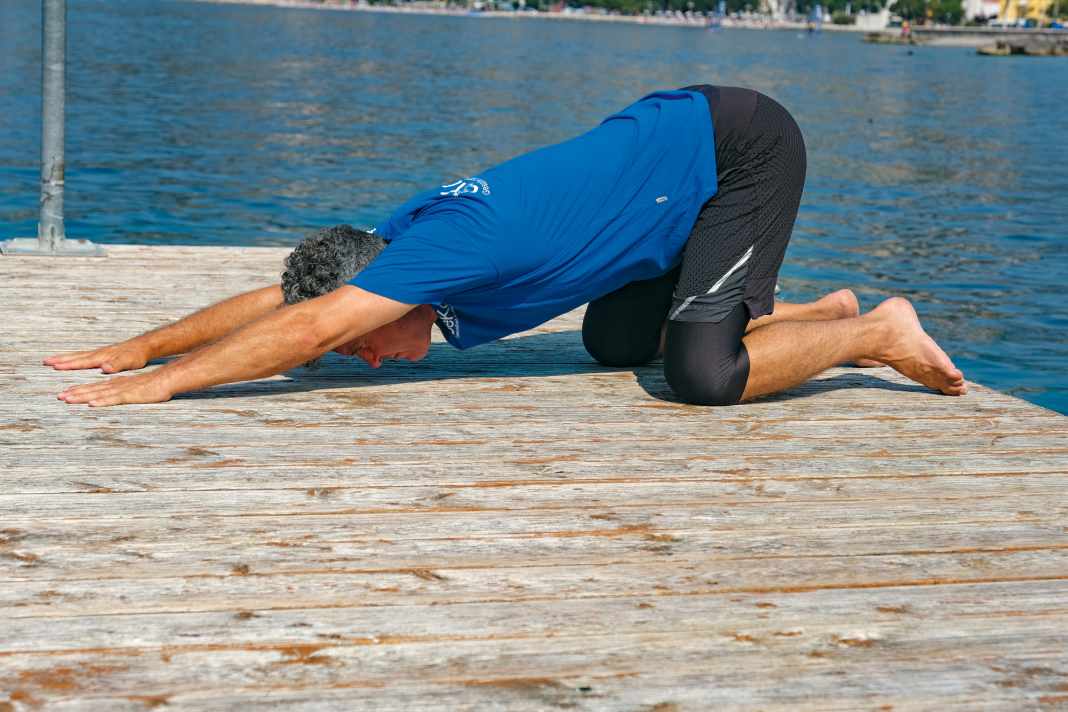



The shoulders are required holding instruments for every type of windsurfing. Basic exercise (right): Get into a quadruped position, place both hands on the floor far in front of you. Move back towards your heels, keep your hands firmly on the floor and lower your chest as low as possible. Pull your bottom away from your hands until you can feel the relaxation between your shoulder blades and lower back. Also helps with back pain. Variation: Place your right hand 90 degrees apart next to your body, turn to your left side and try to move your right ribcage towards the floor. You will feel the stretch in the front of your chest.
Exercise for the lower back
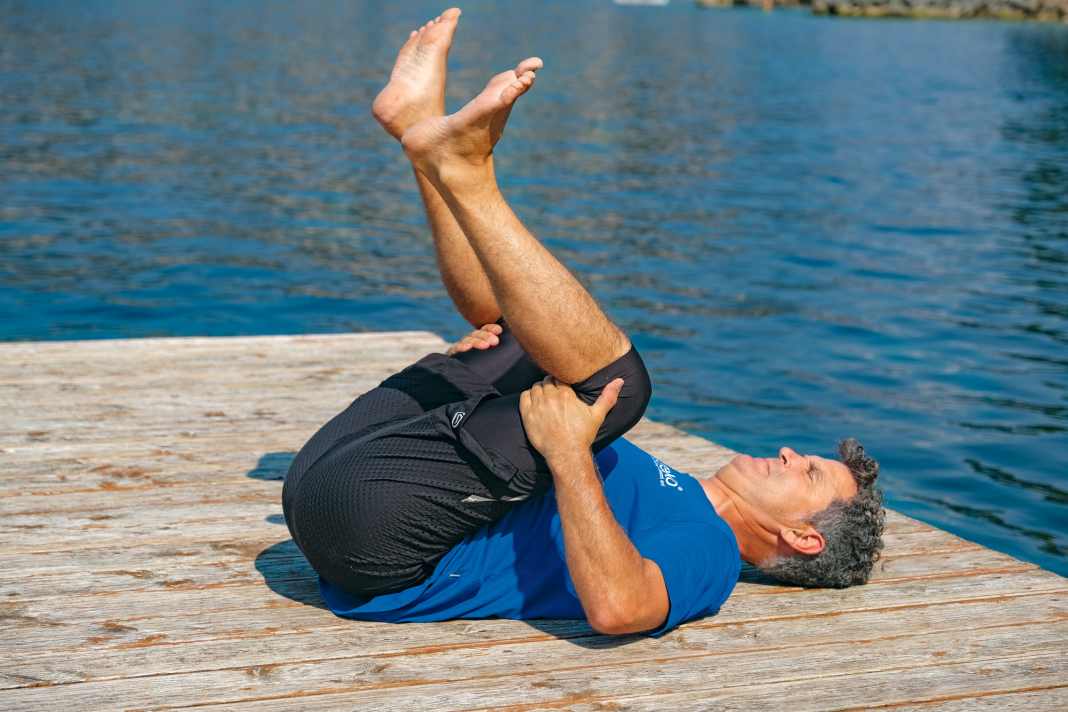


The greatest transfer of force between the pelvis and legs and the upper body, including the supporting apparatus, takes place in the lumbar spine. The slightest movement corrections strain the so-called short back muscles, which are rarely used in everyday life. The result: sore muscles! As this area is completely unfamiliar, it almost feels like "lumbago". But don't worry, with these exercises you can relax the area - and not just after a day of surfing or foiling.
Basic exercise: Lie flat on your back, lift your right leg first, grasp your thigh at the back of your knee, then your left leg. Pull both knees past your torso towards your armpit as far as you can, lifting your pelvis subtly off the floor. The long back extensor is stretched.
Advanced version:Stretch your right leg out long, lift your left leg and bend your knee joint. Let your left leg sink to the side over your right leg and try to reach the floor with your knee. The hips twist in relation to the upper body, the shoulders remain on the floor! Look to the left, you can try to press your left knee to the floor with your right hand. Repeat on the other side. Sounds complicated, but it is.
Exercise for the gluteal muscles
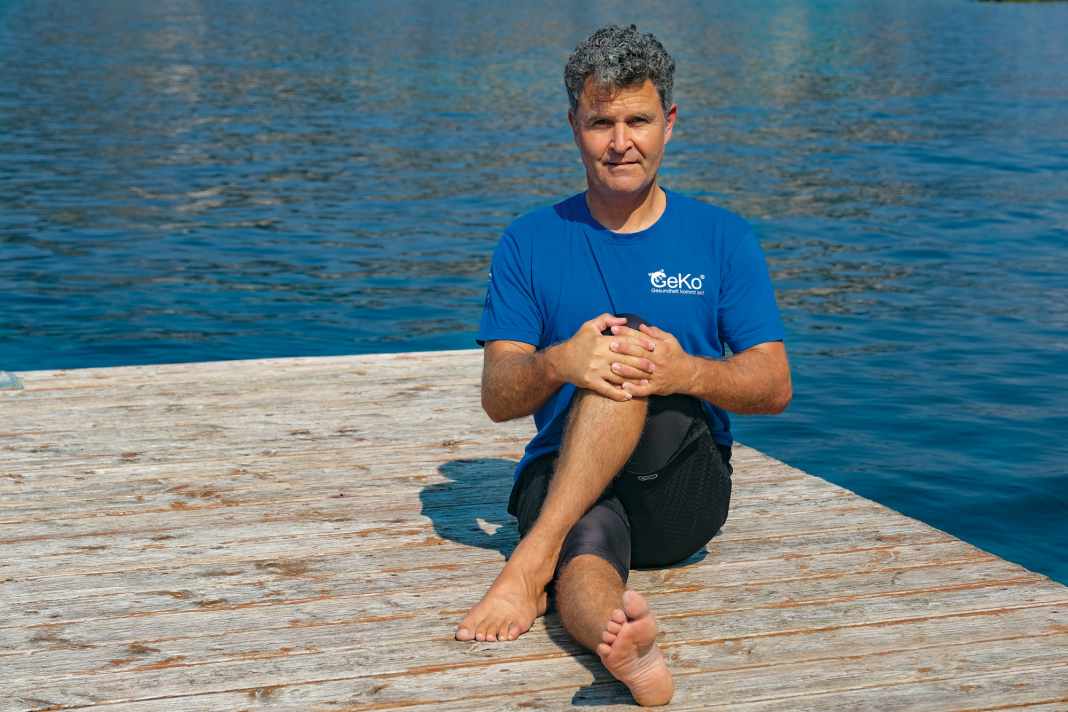




The largest muscle in the body tends to be flattened rather than moulded by the office chair, car seat or sofa. Nevertheless, it is one of the most important and strongest muscles. It is put under a lot of strain through holding work and movement corrections and needs a little attention after an intensive water session.
Basic exercise: Sit on the floor, place your left foot on the floor over your straight right leg at knee height. Important: Sit up straight! Now pull your knee towards your chest. It pulls in the left buttock.
Advanced exercise: As above. In addition, turn your upper body to the left/back and support yourself with your elbow on your knee. Also relax your lower back. Stretch both sides.

